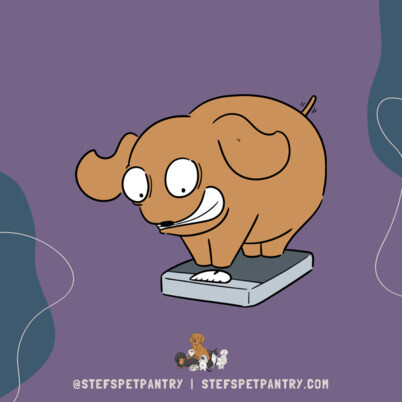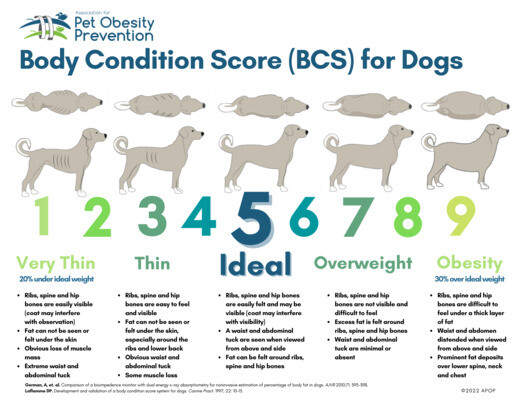Does your dog need to lose some weight? But you're struggling
Do they need to lose weight? Did you know…
One of the best things to help with joint health for your pets, yes that's dogs, cats or your small furries. is to be a healthy weight. Overweight pets are at risk of developing a variety of health concerns, including diabetes, heart disease, kidney disease and certain cancers. I don’t want to be a Debbie downer but carrying excess weight can be detrimental to musculoskeletal health, as it can put added pressure on weight-bearing joints such as the hips and knees. For every extra ½ kg of body weight, an approx 2 kg of pressure is placed on each knee joint (in humans, we take what we know and can translate that into our pets joints). This extra pressure is particularly problematic for pets too.
Top Causes of Pet obesity:
It's important to know how to do a body condition score (BCS), so let's take a look. BCS is more than just a weight on a chart. This is in place to measure body fat more accurately. It helps evaluate each dog individually on their own merit, to a standard universal chart. This is a useful tool for all professionals as well as being as easy to understand for us pet parents. I know it's hard to recognise our own pets as carrying a little extra or even obese. This is also important to help assess each individual’s needs, in terms of calories required per day. Which is one the best ways to feed our pets if you're watching their waistline.
Now we’ve established our pets body condition score… we can determine if they are perfect weight, under or overweight. A lot of the raw feeding pages and posts are centred around feeding 2-4% of the dogs body weight, which is for most dogs this rule works. I'm not getting down on this, we use this rule too when working out how much to feed on a daily basis. However when we are looking at pinching the waistline calories make all the difference. Small adjustments are all it takes to make a big difference.
It’s really important to have an honest body condition score as this will massively influence the amount of calories your pet will be eating per day once we use the calculator to work it out.
Working out your pet’s daily calorie intake can be mind blowing
You’ll need your dog's weight, their BCS and info regarding their neutered status. Once you’ve got all this, you’ll be given a guide between resting energy requirements and maintenance energy requirements. There’s your number. This information is actually really helpful especially when they need to lose weight, gain weight, or maybe they never finish certain meals and you’re left scrambling to find the answers… this could be your answer.
There are some brands that provide calories on the packet, these include, Natures Menu, Kiezebrink, Alaska, Cotswold Raw, Natural Instinct, Benyfit Natural, Nutriwolds, Poppys Picnic, Purrform to name some that are currently adding these onto the packets.
If you don’t feed any of these brands you can work out how much calories are in the food you're feeding, as raw food is a little behind on the times.
Never fear, let’s learn a basic calculation. Which might just help!
Protein (number) x4 =
Fat (number) x9 =
Carbohydrate (number) x4 =
Looking at a real life product, this is dougies chicken 80:10:10
Moisture 66.2%, Crude Protein: 16.7%, Fat: 12.9%, Ash: 3.7%, Crude Fibre: 0.5%
16.7 x 4 = 66.8
12.9 x 9 = 116.1
There's no carbohydrate, this is calculated by adding all the analysis up and taking that away from 100. In this recipe it’s = 0.
Add 66.8 + 116.1 + 0 = 182.9.
So for every 100 grams there's 182.9kcal.
I realise this can look alot of numbers, but honestly it'll be a game changer once you're working your pets food out like this.


